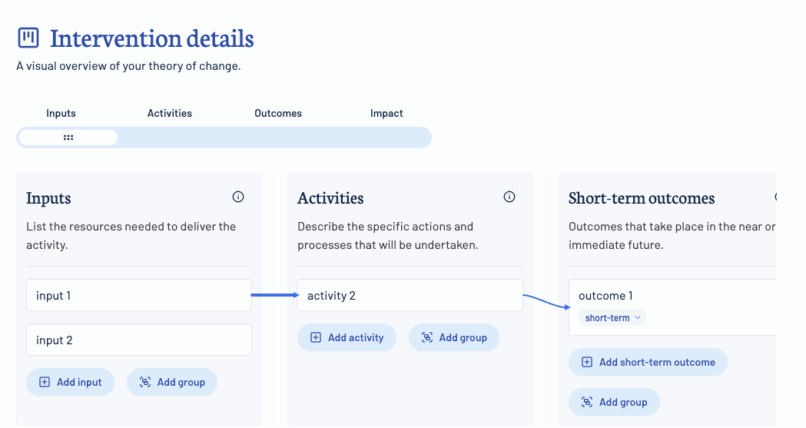
Our new tool simplifies and enhances the process of creating a theory of change – a framework outlining how an intervention is expected to bring about change.
The Theory of Change Builder allows users to input information about an intervention – such as its aims and how activities will lead to change – before synthesising it into a ready-to-use theory of change diagram.

The Theory of Change Builder marks a step-change for the higher education sector as it provides a one-stop shop for developing theories of change from scratch, which is a vital part of any widening participation evaluation.
The innovative online tool includes:
- Step-by-step guided support to build a theory of change from scratch or via templates
- Built-in definitions, examples, and tips for completing each section of the theory of change
- A single platform to export diagrams and documents – replacing the need for third-party tools
- A virtual dashboard for storing, version-controlling, exporting, and importing theories of change
- The ability to expand a simple theory of change (Core) into a more detailed version (Enhanced), accompanied by a written narrative.
While the tool assists those working on evaluation day-to-day, it also supports providers to meet their regulatory obligations as creating a theory of change is a key requirement in submitting access and participation plans to the Office for Students – the regulatory body for higher education in England.
To develop the tool, we sought feedback from practitioners across the sector to help ensure the tool reflects the real-world needs of higher education providers.
Explore the Theory of Change Builder today and get started on developing your evaluation plans for the new academic year.
Find out more about the tool at our upcoming event
Join us online on 17 September (11:00–12:00) for a practical introduction to the Theory of Change Builder.
In this session, you’ll:
- gain insights into how the tool was designed and tested
- see a step-by-step walkthrough of its key features
- hear from Peter Crowson, Evaluation and Research Coordinator at Nottingham Trent University, on how their team plans to use the builder in practice
- get answers to your pre-submitted questions about making the most of the tool.
We’d love to have feedback on the tool and anything else around our evaluation resources. Contact us with your feedback.